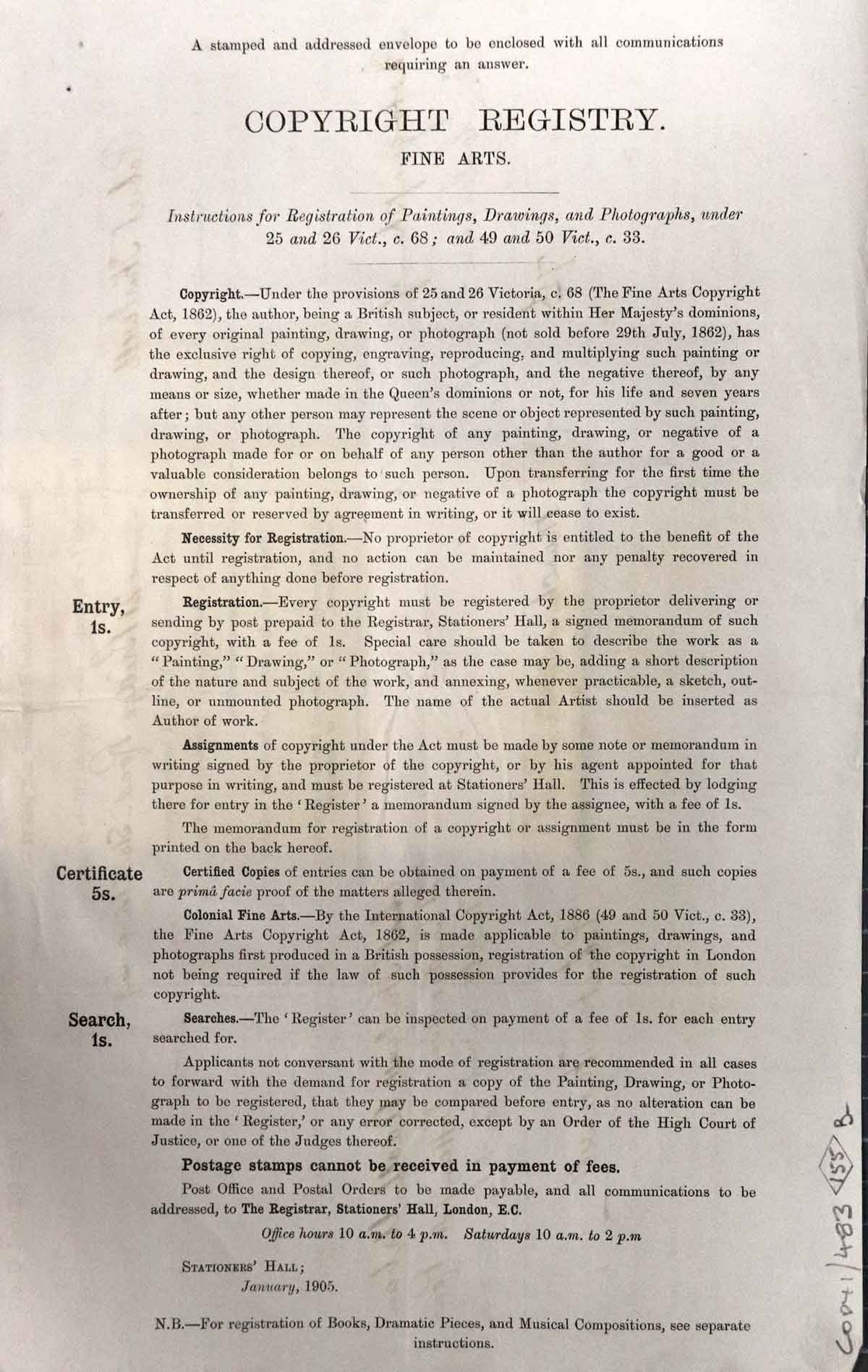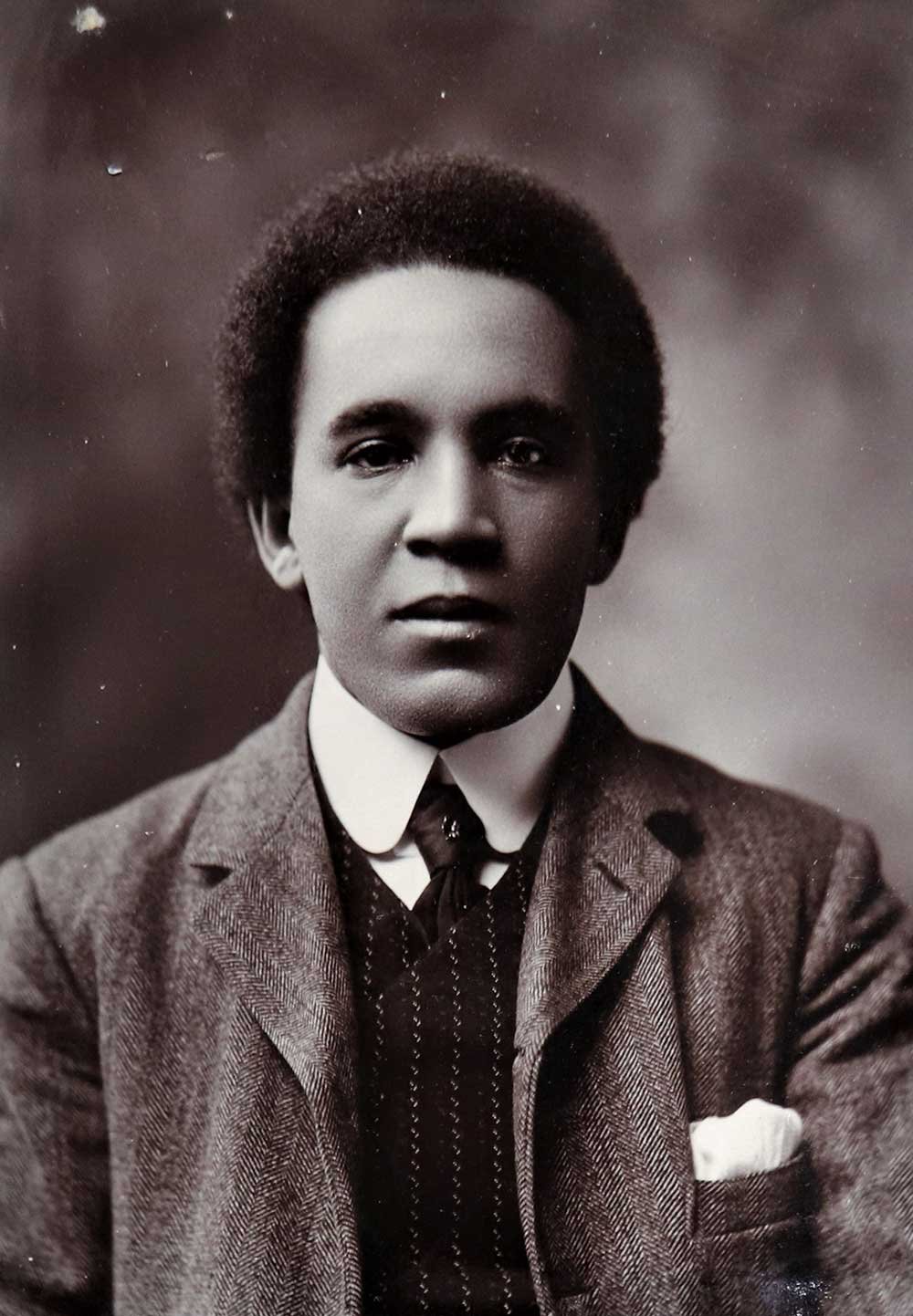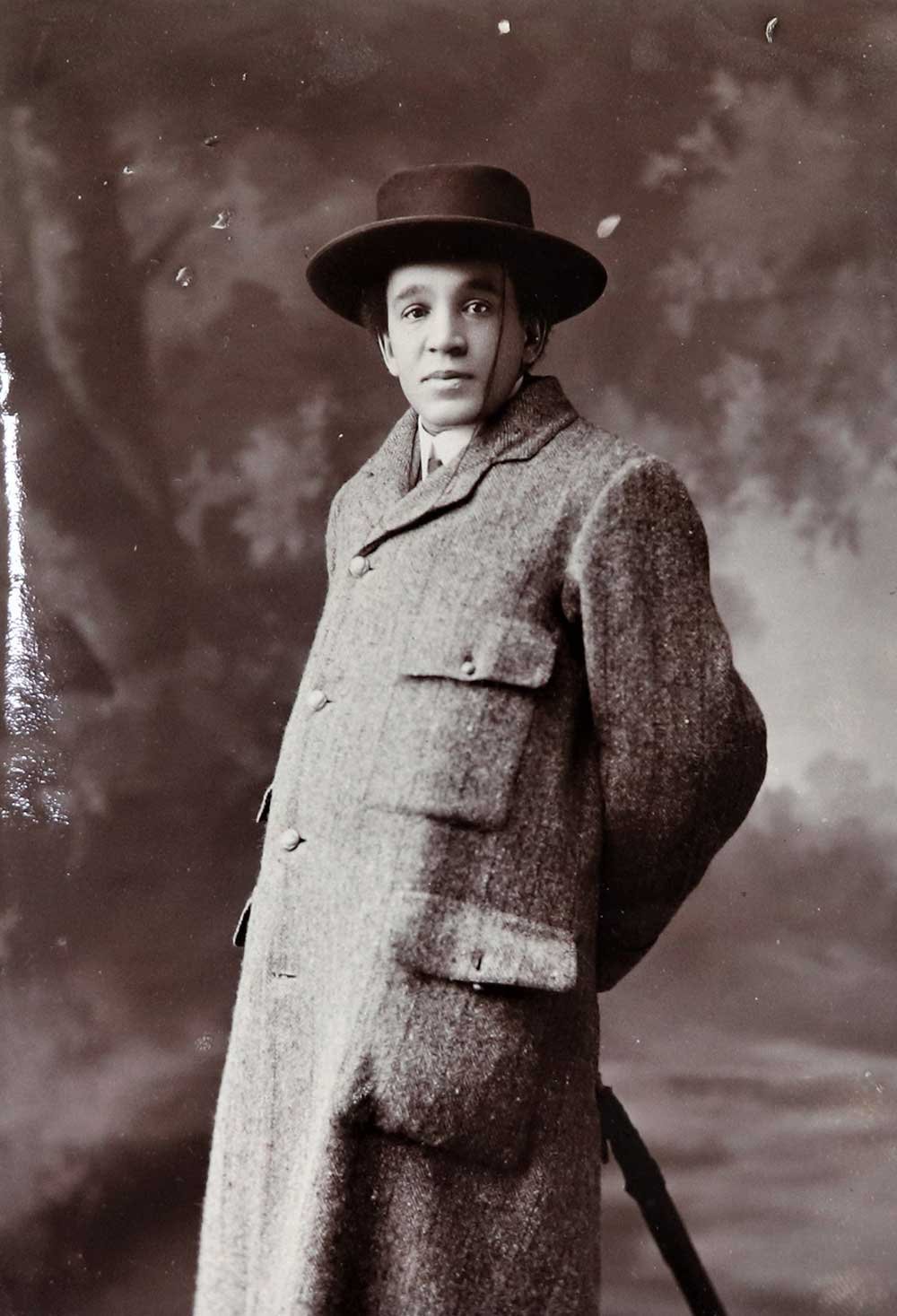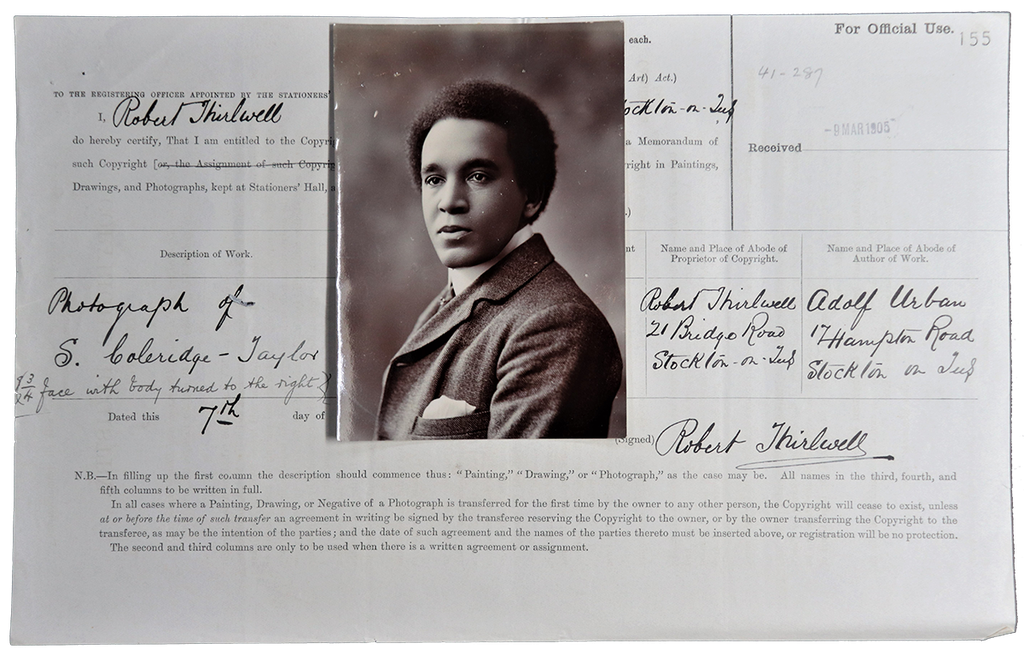Record revealed
Photographs of Samuel Coleridge-Taylor
Samuel Coleridge-Taylor (1875-1912) was an influential British conductor and composer. His music was popular in Britain and America during his lifetime and after his death. The National Archives holds a small collection of photographs of Coleridge-Taylor.

Image 1 of 5

A copyright entry form with Samuel Coleridge-Taylor's photograph attached.
Partial transcript
Photograph of S Coleridge-Taylor, 3/4 face, with body turned to the right.
Name and Place of Abode of Proprietor of Copyright: Robert Thirlwell, 21 Bridge Road, Stockton on Tees.
Name and Place of Abode of Author of Work: Adolf Urban, 17 Hampton Road, Stockton on Tees.
Image 2 of 5

The reverse of the copyright submission document.
Partial transcript
Registration – Every copyright must be registered by the proprietor delivering or sending by post prepaid to the Registrar, Stationers’ Hall, a signed memorandum of such copyright, with a fee of 1s. Special care should be taken to describe the work as a “Painting,” “Drawing,” or “Photograph,” as the case may be, adding a short description of the nature and subject of the work, and annexing, whenever practicable, a sketch outline, or unmounted photograph. The name of the actual Artist should be inserted as Author of work.
Assignments of copyright under the Act must be made by some memorandum in writing signed by the proprietor of the copyright, or by his agent appointed for that purpose in writing, and must be registered at Stationers’ Hall. This is effected by lodging there for entry in the ‘Registrar’ a memorandum signed by the assignee, with a fee of 1s.
The memorandum for registration of a copyright or assignment must be in the form printed on the back hereof.
Certified Copies of entries can be obtained on payment of fee of 5s., and such copies are prima facie proof of the matters alleged therein.
Image 3 of 5

Image 4 of 5

Image 5 of 5

Why this record matters
Date: 1905
Catalogue reference: COPY 1/483/155
Samuel Coleridge-Taylor (1875–1912) was an influential British conductor and composer during the early 20th century. His music was hugely popular in Britain and America during his lifetime and after his death. He is best known for his trilogy of cantatas based on the epic poem The Song of Hiyawatha by Henry Wadsworth Longfellow. They were first performed between 1898 and 1900 and brought the composer international acclaim.
Coleridge-Taylor was also a strong advocate for racial equality, colonial freedom, and broader black activism. He attended the inaugural Pan-African conference in London in 1900.
From 1862 to 1912, individuals and businesses submitted photographs and artwork for copyright protection. They did this by applying for registration with the Stationers’ Company. The process of registration required the copyright proprietor to fill out an entry form with a description of the work and their personal details, as well as the details of the artist or photographer. These photographs were submitted for copyright protection by Robert Thirlwell of 21 Bridge Road, Stockton-on-Tees, in 1905.
They present Coleridge-Taylor as someone of high social standing. He is wearing what seems to be expensive clothing and is depicted as an English gentleman. The photographs showcase Coleridge-Taylor in various elegant poses, exuding confidence and sophistication. The attention to detail in his attire and the carefully chosen backdrop further emphasise his status and refinement.
Although there is no contextual information within these entry forms, they do provide us with a unique insight into Coleridge-Taylor’s status and image within British society. The entry forms also indicate that Coleridge-Taylor had the means to hire a professional photographer, suggesting a level of financial stability. Furthermore, the fact that these photographs were submitted for copyright protection implies that Coleridge-Taylor's image was valued and photographers sought to protect rights to his image.
